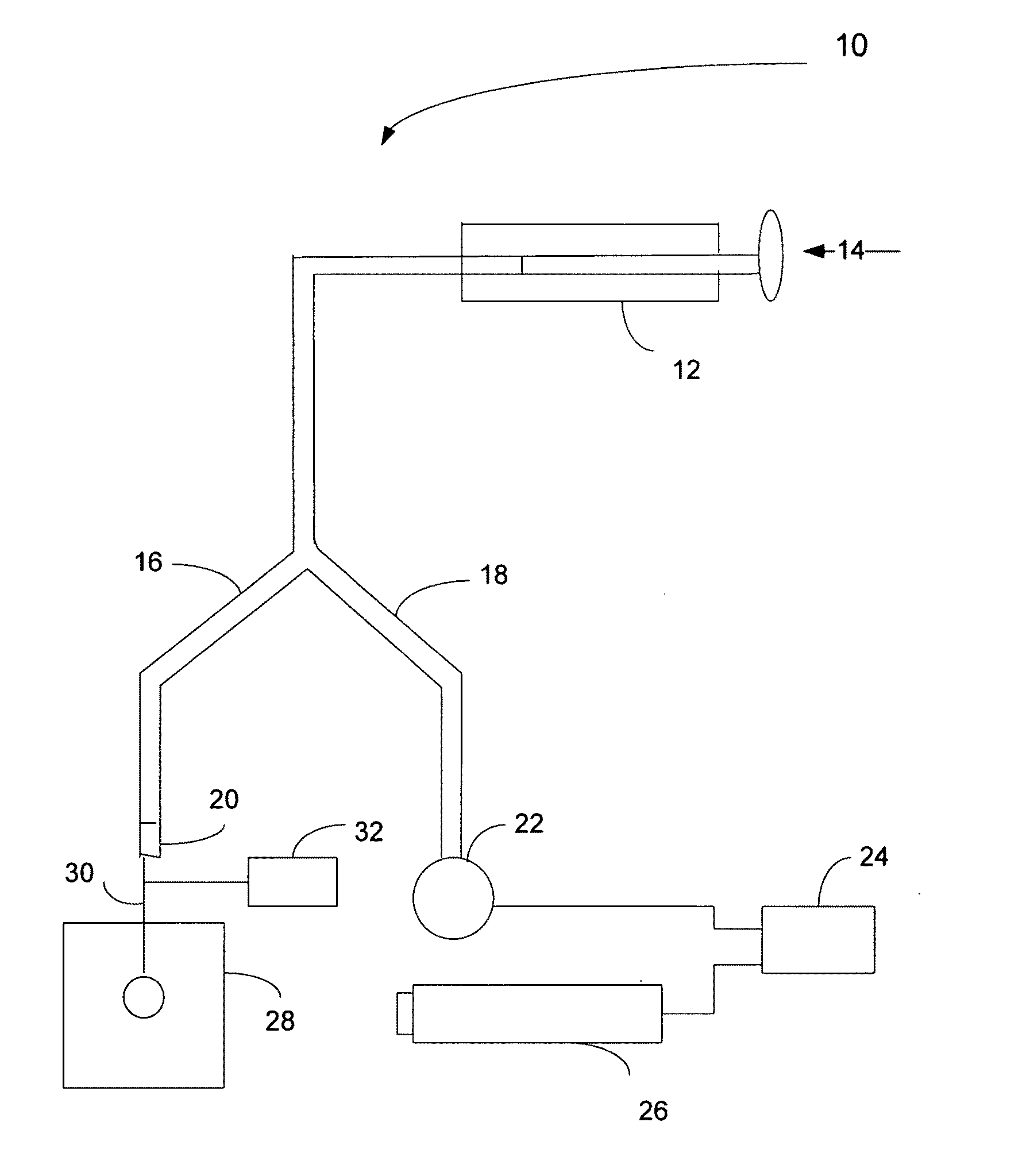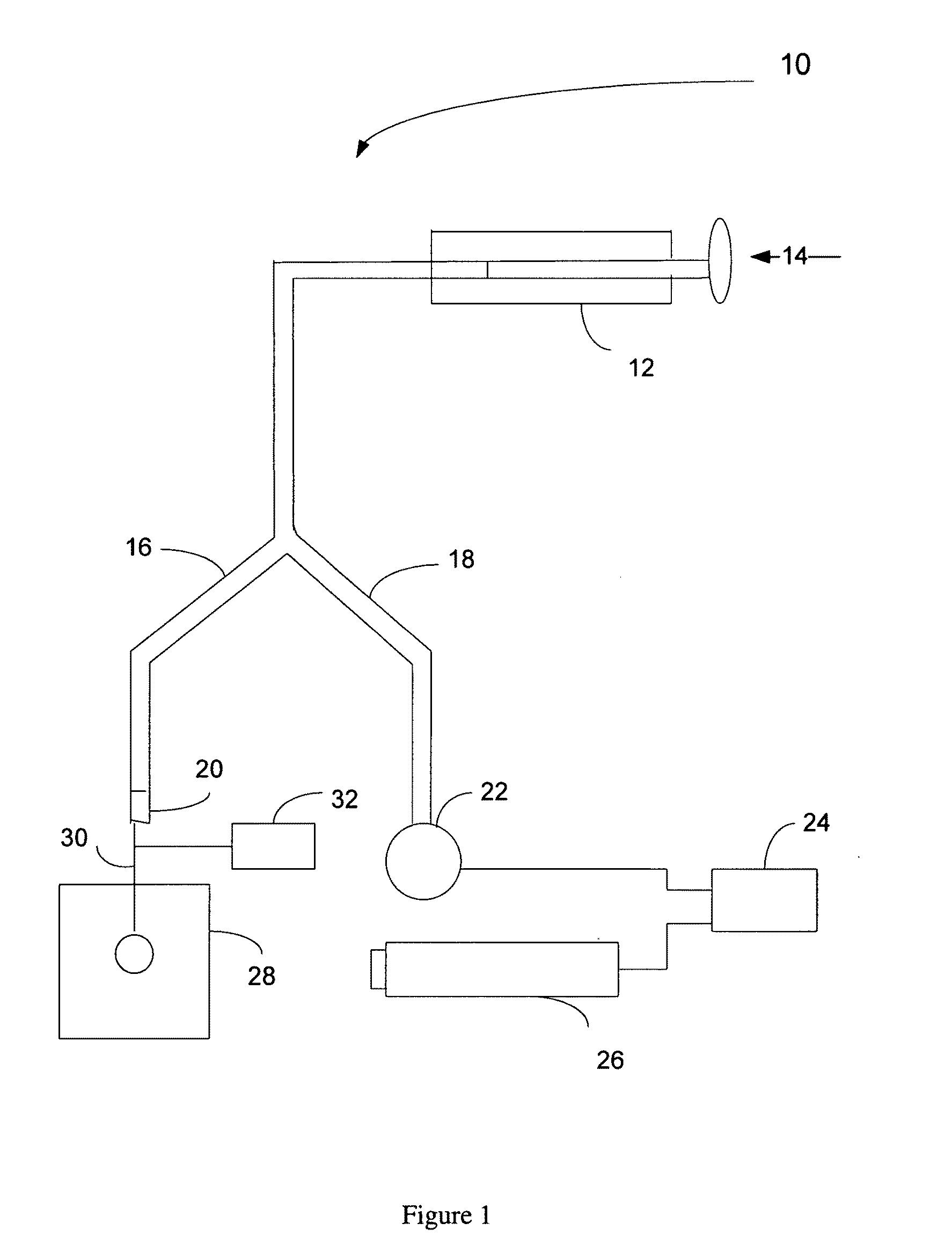Methods and apparatus for modulus measurement
- Summary
- Abstract
- Description
- Claims
- Application Information
AI Technical Summary
Benefits of technology
Problems solved by technology
Method used
Image
Examples
example 1
[0050]PVA powder MW 13000-23000, 99.9% hydrolysis was purchased from Sigma Aldrich. The PVA gel was prepared in a manner similar to Wang. Wang, H. H.; Shyr, T. W.; Hu, M. S. Journal of Applied Polymer Science 1999, 74, (13), 3046-3052. The polymer in a mixed solvent of dimethyl sulfoxide and water in a 40 / 60 ratio with two percent boric acid as a crosslinking agent at 90° C. until the polymer was fully dissolved. The solution (e.g., about 8-15 wt. % PVA) was then cooled to room temperature whereafter the solution forms a gel. Unless stated, hydrogels of 10% PVA were used for further demonstration. (Samples were stored in airtight containers to prevent solvent loss.)
example 2
[0051]Cone and plate shear rheometry is used to measure the shear moduli of the PVA gels on macroscopic length scales. These experiments were conducted on a cone a plate Rheometer with a 40 mm cone at a two degree angle. A stress sweep was done to determine the frequency at which the subsequent time test was to be run at to ensure that the entirety of the test was performed in the linear elastic region. The time sweep was run at room temperature for one hour.
example 3
[0052]To determine the local modulus, a semi-automated instrument was designed, as an embodiment of an apparatus of the sort presented herein, to induce and monitor a volume of air into a gel sample via a syringe pump. (FIG. 1.) All experiments were performed at a syringe pump rate of 400 μl / min. The initial air stream as introduced by the syringe pump is divided into two paths: one to induce the cavity within the gel and one to enable pressure monitoring as a function of time. A camera records cavity formation within the transparent gel. The pressure and image acquisition are controlled by a custom-written program within LabView.
PUM
 Login to View More
Login to View More Abstract
Description
Claims
Application Information
 Login to View More
Login to View More - R&D
- Intellectual Property
- Life Sciences
- Materials
- Tech Scout
- Unparalleled Data Quality
- Higher Quality Content
- 60% Fewer Hallucinations
Browse by: Latest US Patents, China's latest patents, Technical Efficacy Thesaurus, Application Domain, Technology Topic, Popular Technical Reports.
© 2025 PatSnap. All rights reserved.Legal|Privacy policy|Modern Slavery Act Transparency Statement|Sitemap|About US| Contact US: help@patsnap.com



